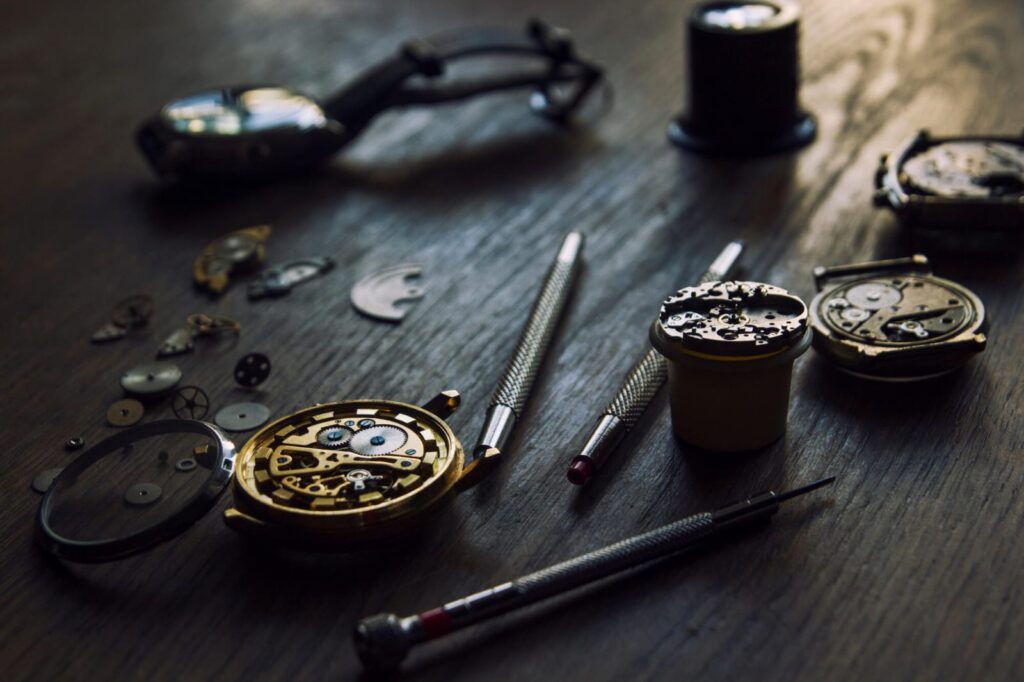
Watches are more than just devices to tell time; they’re intricate works of art and engineering. Each part of a watch contributes to its overall function and elegance.
Understanding these components can deepen your appreciation for the timepiece on your wrist. In this blog post, we’ll explore the essential watch components and why each one matters.
The Case
The case is the outer shell that houses all the internal components of the watch. It serves two main purposes – protection and aesthetics. Cases are typically made from materials like stainless steel, gold, titanium, or ceramic.
The Crystal
The crystal is the transparent cover that protects the watch dial. It can be made from acrylic, mineral glass, or sapphire.
Acrylic is the least expensive and most prone to scratches, while sapphire is the hardest and most scratch-resistant. The type of crystal used affects both the durability and clarity of the watch face.
The Dial
The dial, also known as the face of the watch, displays the time and other functions like the date or moon phase. Dials come in various colors, designs, and materials. The design of the dial plays a crucial role in the watch’s overall aesthetic and readability.
The Hands
The hands of a watch indicate the time by pointing to the numbers or markers on the dial. They are typically made from metal and come in various shapes and styles, such as sword, dauphine, or leaf. The choice of hands can significantly impact the watch’s appearance and functionality.
The Movement
The movement, also known as the caliber, is the engine of the watch. It drives the hands and powers any additional features like the date or chronograph. Movements are categorized into two main types – quartz and mechanical.
Quartz movements are powered by a battery and are highly accurate, while mechanical movements rely on a wound spring and are prized for their craftsmanship. The type of movement used affects the watch’s accuracy, maintenance needs, and overall value. Check this page on watch battery lifespan to learn more about essential watch parts.
The Crown
The crown is the small knob on the side of the watch case used to set the time and date and wind the movement in mechanical watches. It can also be a design element, often engraved with the watch brand’s logo. The crown’s design and functionality are essential for the watch’s usability.
The Bezel
The bezel is the ring surrounding the watch crystal and can be fixed or rotated. Rotating bezels are commonly found on diving watches and are used to measure elapsed time. The bezel adds both functionality and style to the watch.
The Lugs
Lugs are the extensions on the watch case where the strap or bracelet is attached. They come in various shapes and lengths and can affect the fit and comfort of the watch on the wrist. Properly designed lugs ensure that the watch sits comfortably and securely on the wrist.
The Strap or Bracelet
The strap or bracelet ensures the watch to the wrist and can be made from varied resources, including leather, metal, rubber, or fabric. The choice of material impacts the watch’s comfort, durability, and style.
Learning the Many Watch Components
Understanding the watch components can deepen your appreciation for these intricate timepieces. Each part, from the case to the movement, plays a vital role in the watch’s functionality and aesthetics.
Use this watch parts guide to learn more. Explore the world of watches, and you’ll find that every tick tells a story.
If you want to read more articles, visit our blog.
